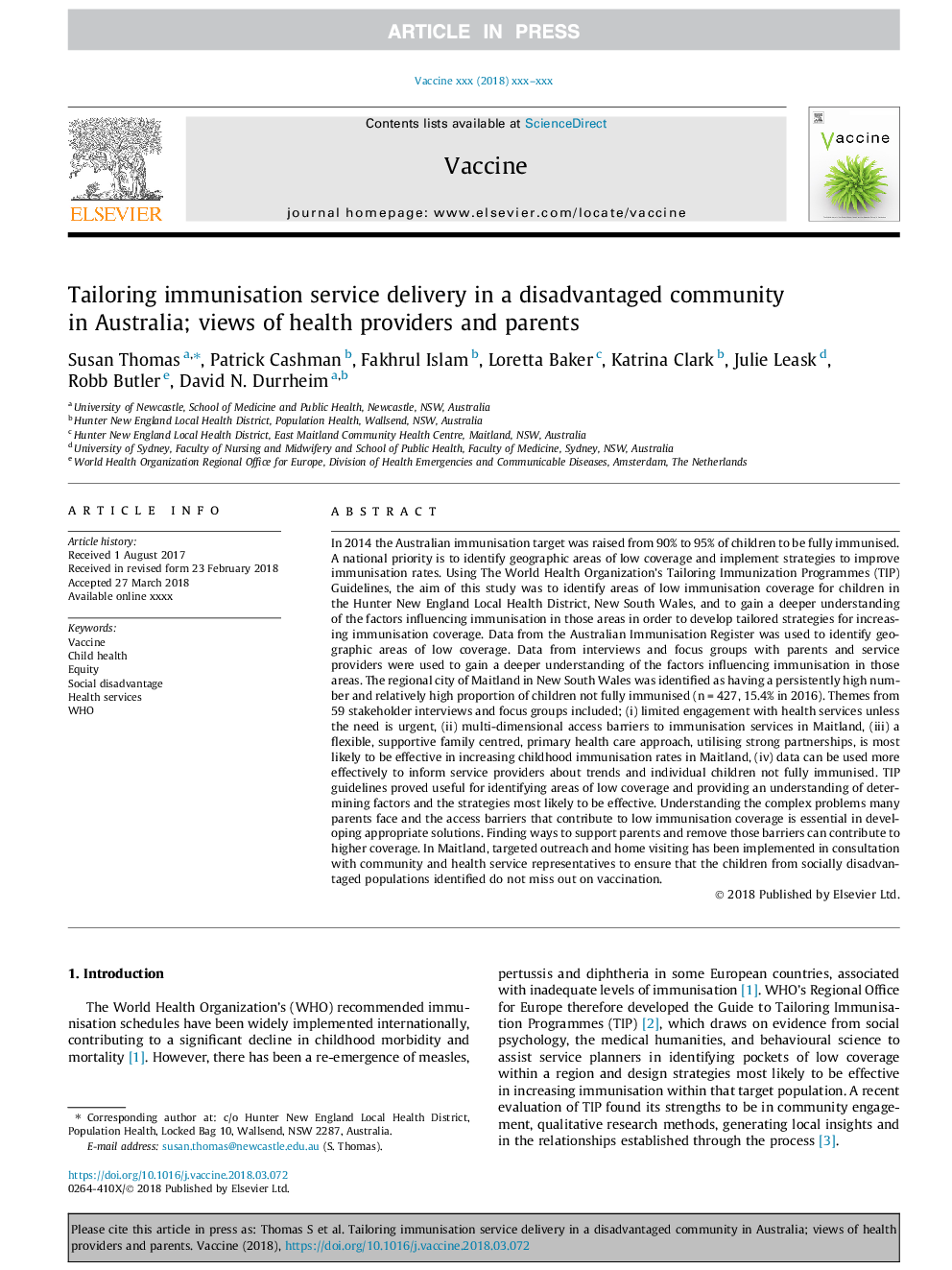| Article ID | Journal | Published Year | Pages | File Type |
|---|---|---|---|---|
| 8485739 | Vaccine | 2018 | 8 Pages |
Abstract
In 2014 the Australian immunisation target was raised from 90% to 95% of children to be fully immunised. A national priority is to identify geographic areas of low coverage and implement strategies to improve immunisation rates. Using The World Health Organization's Tailoring Immunization Programmes (TIP) Guidelines, the aim of this study was to identify areas of low immunisation coverage for children in the Hunter New England Local Health District, New South Wales, and to gain a deeper understanding of the factors influencing immunisation in those areas in order to develop tailored strategies for increasing immunisation coverage. Data from the Australian Immunisation Register was used to identify geographic areas of low coverage. Data from interviews and focus groups with parents and service providers were used to gain a deeper understanding of the factors influencing immunisation in those areas. The regional city of Maitland in New South Wales was identified as having a persistently high number and relatively high proportion of children not fully immunised (nâ¯=â¯427, 15.4% in 2016). Themes from 59 stakeholder interviews and focus groups included; (i) limited engagement with health services unless the need is urgent, (ii) multi-dimensional access barriers to immunisation services in Maitland, (iii) a flexible, supportive family centred, primary health care approach, utilising strong partnerships, is most likely to be effective in increasing childhood immunisation rates in Maitland, (iv) data can be used more effectively to inform service providers about trends and individual children not fully immunised. TIP guidelines proved useful for identifying areas of low coverage and providing an understanding of determining factors and the strategies most likely to be effective. Understanding the complex problems many parents face and the access barriers that contribute to low immunisation coverage is essential in developing appropriate solutions. Finding ways to support parents and remove those barriers can contribute to higher coverage. In Maitland, targeted outreach and home visiting has been implemented in consultation with community and health service representatives to ensure that the children from socially disadvantaged populations identified do not miss out on vaccination.
Related Topics
Life Sciences
Immunology and Microbiology
Immunology
Authors
Susan Thomas, Patrick Cashman, Fakhrul Islam, Loretta Baker, Katrina Clark, Julie Leask, Robb Butler, David N. Durrheim,
